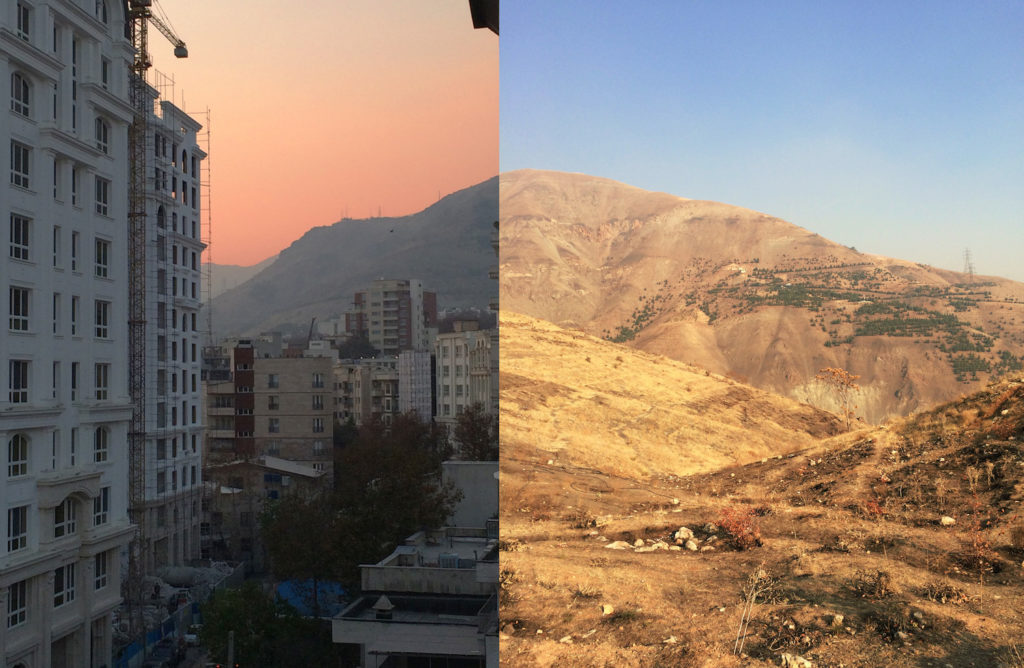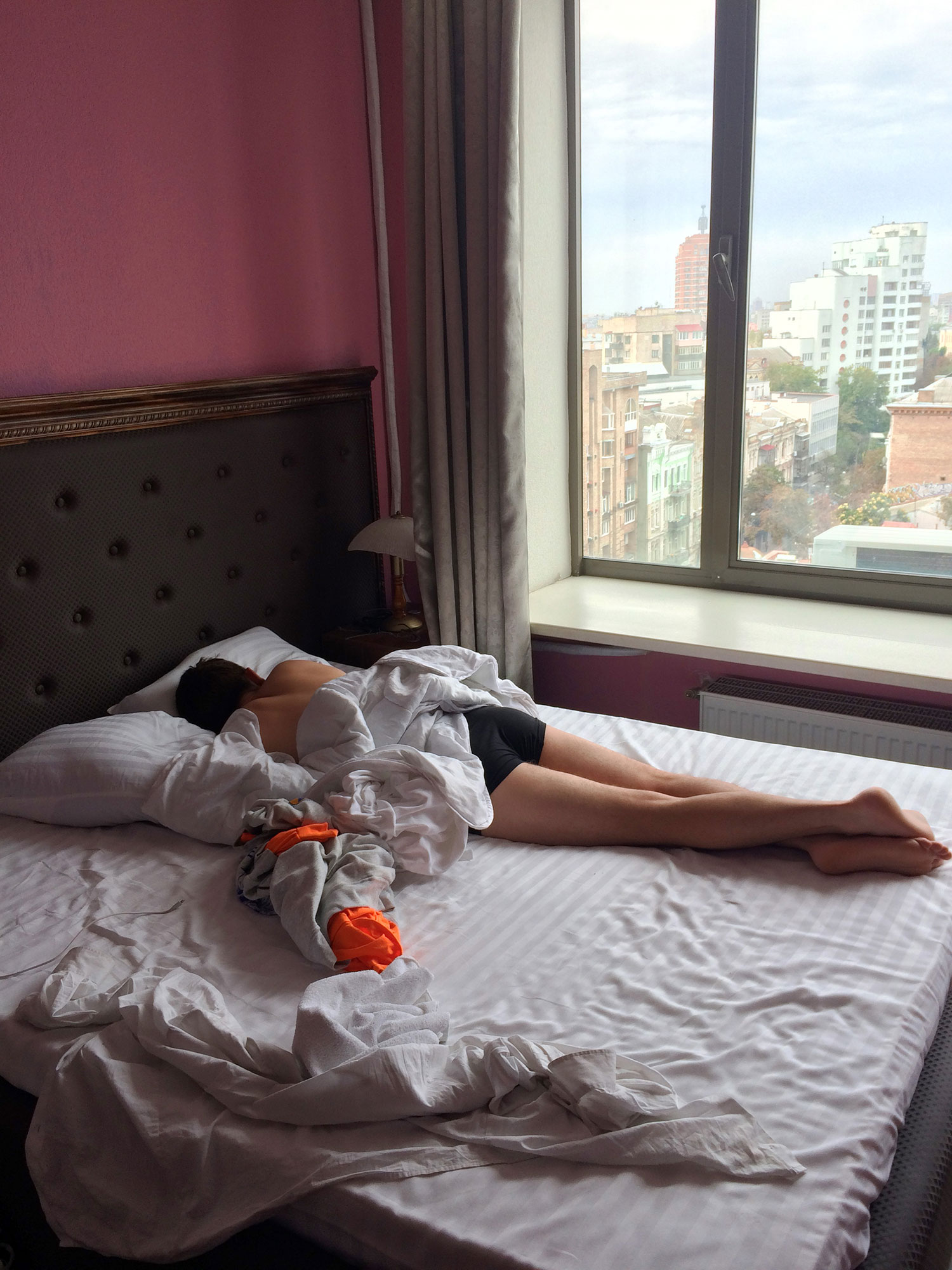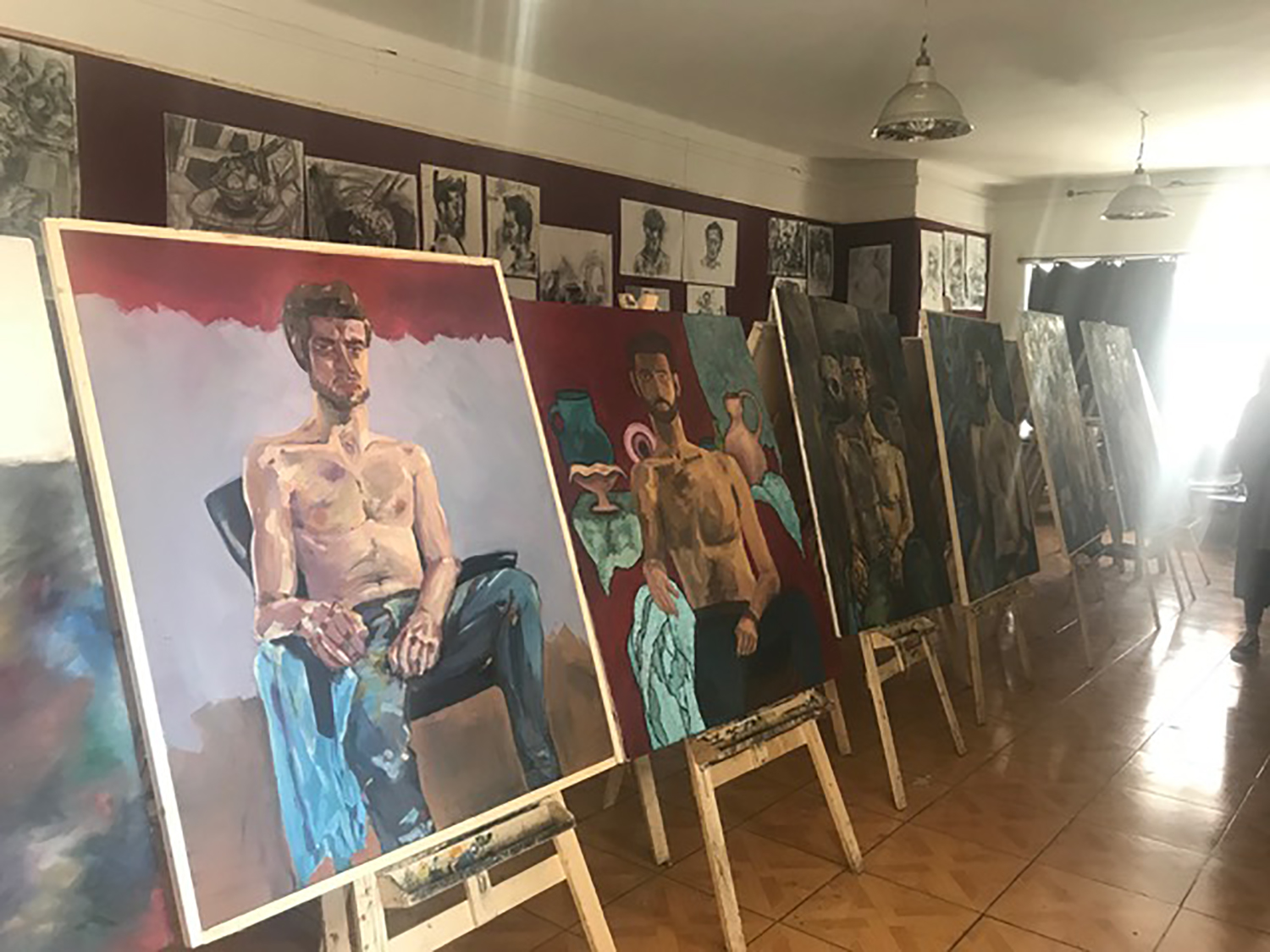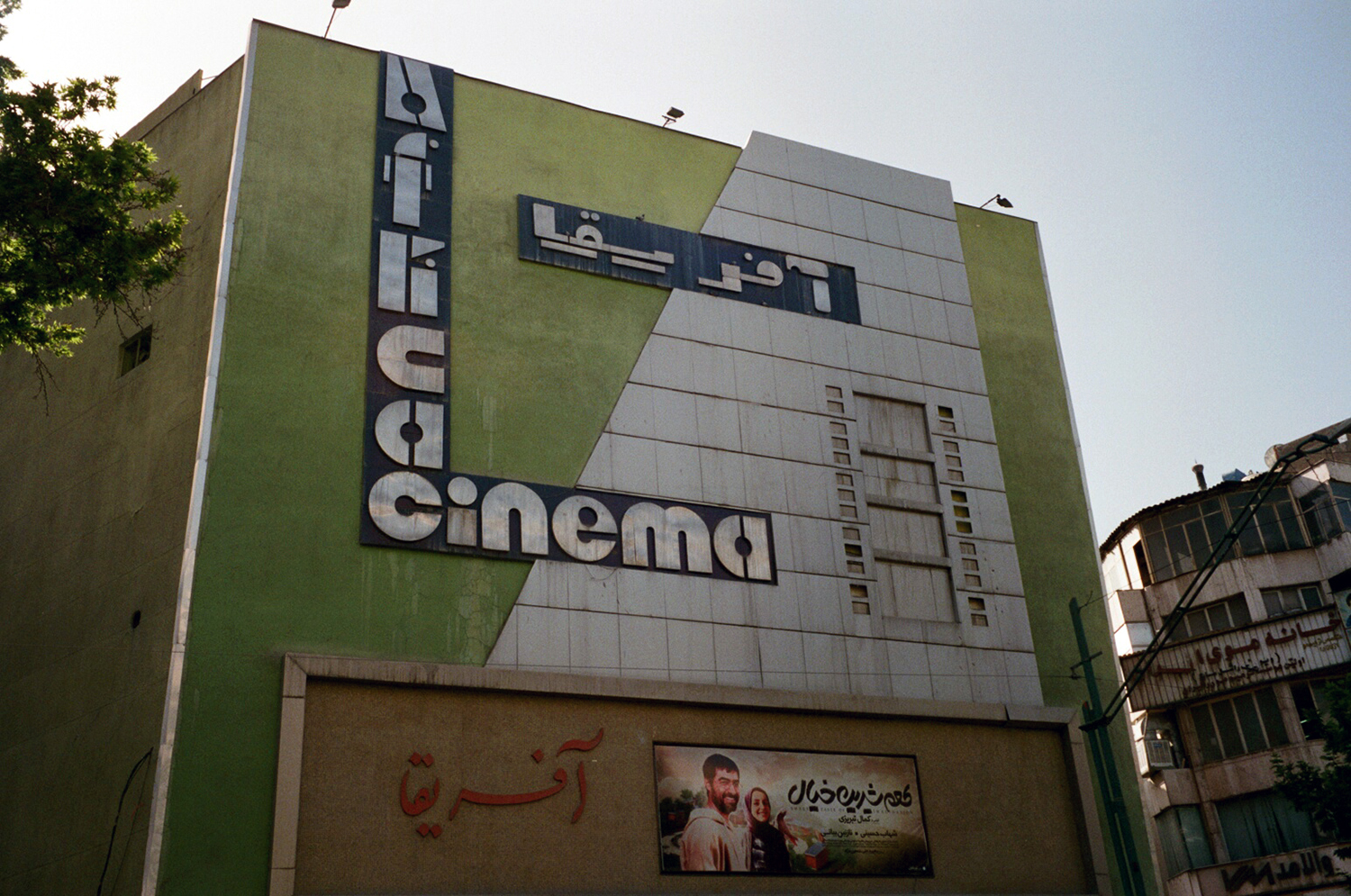
Dan Bodan spent November 8 to December 8 in residence at the Goethe Institute in Tehran. Flash Art invited him to write a travelogue during his time there. This is the second installment.
I show the driver the address from my phone. “Niavaran? Forty tomans, ok?!”
I’m moving today. I’ve caught a taxi on the street in Central Tehran, in a working-class area near a military university where I’ve been living for the past week in a shared flat with five male art students in their early twenties. There was some miscommunication with the embassy, and they thought I wanted to “live close to local artists.” When I explain that this is a somewhat inappropriate setup given that I’m thirty-two years old, my host looks at me shocked and exclaims, “You ARE?? But you look so young, like a teenager!” It’s an exchange I’ve grown so weary of by now that I avoid discussing my age whenever possible. My neoteny, something I once considered a secret weapon, has made me increasingly insecure with age, as I wonder how it might actually be affecting my emotional and professional growth. Forever cradled in kid’s gloves, will I remain soft?
The toman is a unit used by locals for transactions instead of the Iranian rial because it divides the price by ten. So forty tomans (which actually means forty thousand tomans, because the “thousand” is already implied) actually means four hundred thousand rial. I’m told the math will quickly become second nature, but by the time I leave Iran I’m still just handing piles of colorful banknotes over to vendors and letting them take their pick. It’s a considerable time saver.
The taxi driver throws my suitcase in the back seat and instructs me to sit in front with him. He’s a pleasant man and is very excited to be driving someone from outside Iran (though I can’t help but detect a sliver of disappointment when I tell him I’m Canadian. “Oh… So no America?” Nope, sorry.) This curiosity about Westerners is something people had prepared me for prior to my arrival; it is very true that strangers will come right up to you on the street and ask where you are from, welcome you to Iran, and in some cases invite you to dinner with their family. My second day in the city, while waiting outside a restaurant with a friend, an elderly lady in full chador walks up to me with the kindest smile on her face and, translating through my friend, tells me how happy it makes her that foreigners are visiting Iran again. I don’t know if I’ve ever made anyone this happy before. I can honestly say that none of the guys I’ve dated have ever looked at me so lovingly, and most would be happy to maintain a moratorium on my presence in their lives. I’m genuinely touched.
The taxi driver weaves his way through the thicket of Tehran’s notorious rush-hour traffic. A trip that on paper shouldn’t take more than a half hour will run into the ninety-minute mark. I feel safer driving during rush hour though; it feels less likely we’ll end up in a serious accident while driving at a snail’s pace in a tide of cars almost uniformly colored white or black, speckled with green and yellow taxis and large blue municipal pick-up trucks from another era. The blue trucks, I’m told, are to be avoided at all costs because they don’t have brakes. No brakes?
“Other cars are the brakes.”
(I assume this is a joke until the very next day when I see one slam into a parked white passenger vehicle and no one seems to pay it much attention.)
Tehran has a metro population of over fifteen million, and it seems like everyone has at least one vehicle. Despite efforts from the government there is still very little in the way of enforced traffic regulations, and the only time I see people heeding traffic signals is when two highways, at least eight lanes deep, are required to intersect. My first day, wondering how exactly I’m supposed to cross the street, my friend grabs me firmly by the arm and drags me directly into the flow of traffic and waltzes me calmly to the other side. Like jumping into the ocean, the worst part is the first step; once inside you give yourself over to the current and come out refreshed (except when you don’t).
As a result of all this driving in vehicles with mostly outdated engines, Tehran is terribly polluted. It’s my first experience with heavy smog, and I can’t help but be impressed with the way it inhabits the city, floating through everything like animated mist in a Disney film, softening the details of faces, consuming the mountains and cityscape at will. On days when there is no wind and the pollution stays thick within this city flanked on three sides by mountains, the sunset becomes a spectacle of gorgeously diffused, all-embracing amber, gold, and champagne pink you can see between your fingertips. The director at Mohsen Gallery asks if I’m handling the air quality ok.
“I actually quite like it,” she tells me. “To me it’s a part of the city.”
Beautiful but unfortunately breathtaking in the most literal way; it’s a major public health issue, the cause of many deaths annually and a contributing factor in the government’s plans to move the capital elsewhere.
While winding up along an elevated highway I notice a tattoo of a fish on my driver’s arm, peaking out from beneath his T-shirt. I remove my hat to show him the protein enzyme my friends tattooed on the back of my head as part of a viral marketing campaign. He’s thrilled by this.
“Tattoos, SO good!” In Farsi and gesticulation he tells me he has an even larger tattoo on his back. Of what?
“Also Fish. BIG fish.” At which point he plugs his phone into the car speaker and starts to play Celine Dion’s “My Heart Will Go On” at full blast. He says her name aloud and puts his hand to his heart in total admiration.
He then goes on to rattle off a list of things he thinks are bad or good, indicating bad by crossing his forearms in front of him, good by giving a double thumbs-up (though traditionally this has the opposite meaning in Iran). These gestures, as well as the fifteen or so words of English he knows and the three words of Farsi I’ve learned, will constitute a pidgin we’ll use to communicate for the remaining hour or so.
The highways through the northern neighborhoods of the city are lined with chenar trees, and represent one of the few unifying features of the city. They look ancient, but I’m informed by a friend that in fact most were placed there in the mid-nineties by Gholamhossein Karbaschi, Tehran’s reformist mayor who oversaw a number of large urban-renewal projects throughout the city before being tried and convicted on corruption charges viewed by many as a politically motivated attack by conservatives and hard-liners who opposed then President Khatami’s reformist agenda. Is that what my friend thought had happened?
“Probably, but he was probably also a bit corrupt as well. There’s a lot of corruption in Iran. It’s not like it’s a secret.”
Ah, “corruption” — the unifying vice for peoples everywhere.
As we pass the Imam Khomeini Mosalla, a monumental but unfinished mosque/conference center under construction for well over a decade and still nowhere near finished, my taxi driver sighs and his tone changes to something a little dourer.
“Canada, good. Germany, good. Iran, good.” He pauses for a moment.
“Iraq, bad.”
I’m caught off guard by this and don’t know how to respond. I just look at him confused.
“Iraq, very very bad.” He repeats.
At this point our made-up language fails us. I’d like to pull out my phone and try communicating with Google Translate, but it’s not good enough yet, and besides, the Silicon Valley dreamers have yet to develop an app to simulate the empathy needed in conversations like this. (And the fact that they might not be that far off from actually developing such a tool fills me with dread.)
In the West (maybe everywhere) I feel it’s more common to assume that the defining event in Iran’s twentieth-century history is the 1979 cultural revolution; which might be true in some ways, but after visiting it’s pretty clear that the wounds of the Iran-Iraq war cut far deeper than is usually expressed abroad. More than a small percentage of the streets in Tehran are named for martyrs, and the faces of young men lost in war are printed all over the city, at small street-level shrines or blown up the size of office buildings. While a lot of this is obviously an extension of the country’s impressive propaganda machine, the grim realities of the war are pretty difficult to ignore here, and I’m disappointed in myself for not knowing more about it before arriving. It makes me a little sick to acknowledge that atrocities might actually require their own PR division.
If the revolution was a spiritual triumph, the war was a human catastrophe.
I hesitate.
And then carefully reply, “I don’t know, I’ve never been.”
Oh, how Canadian of me.
He doesn’t understand, but looking at me I think he realizes he’s making me uncomfortable and immediately waves his hand in the air as if to wash the slate clean.
“Ok, ok ok. But tattoos? Good!” he laughs and shares more of his favorite pop music.
We finally break free from the traffic gridlock and wind our way up the foothills, above the clouds of yellow-green smog and toward Niavaran, one of the wealthiest areas in Tehran. Located just at the base of the Tochal Mountains in the east of the city, Niavaran had been the retreat of shahs for centuries before Mohammad Reza Pahlavi made it the official residence of he and his third wife (whose French art school training is on full display here) in an exquisitely decadent modernist palace (complete with a motorized retracting roof) ten years before he would be ousted in 1979.
The area surrounding the palace is now home to some of Iran’s most elite in a dense concentration of high-rise luxury condos fabricated in a faux neoclassical style. They’re horrifying but impressive, similar to Ceausescu’s palace in Bucharest, with huge marble columns, baroque detailing, and gilded gates. I’m surprised that there is little of the “Gulf Futurism” favored in other Islamic capitals and wonder if this has anything to do with Iran’s complicated history with both Europe and the Arab Peninsula. To make the trip from the center to here, to witness that dramatic of a shift, that level of clear inequity is as mystifying as it is frustrating. When I send a photo of my building’s opulent front entryway to my friend he replies, “You totally manifested this! How do you feel?”
Conflicted.
While taking a walk through a nearby park my friend asks what I think of the neighborhood and I tell her I think it’s “pretty crazy this exists” and it makes the revolution even more difficult to understand. She tells me to read a poem by Mehdi Akhavan Sales, a well-known revolutionary poet, titled “Inscription.” In it, a village of people all chained together read a message carved into a large stone that tells them the answer to their woes is written on the other side. Collectively they flip the stone, only to find the same message inscribed on the other side.
If I wake up at 6 AM, from the window of my tenth-floor condo I can see the sun rise over a magnificent view of the city. Over the course of the next hour it will slowly disappear into a cloud of exhaust. Beautiful, toxic gas wraps the city up for another day, but I’m mostly safe from that up here.
Today I’ll teach myself to deseed a pomegranate like a professional. With a knife, score it along each membrane, pull it open, then smack the shit out of it with a wooden spoon.




